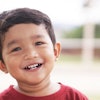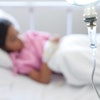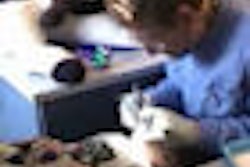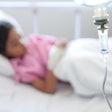A huge percentage of underprivileged children in Los Angeles have untreated caries, according to a study led by the Herman Ostrow School of Dentistry of the University of Southern California.
In the report released during February's National Children's Dental Health Month, researchers Roseann Mulligan, D.D.S., M.S., and Hazem Seirawan, D.D.S., M.P.H., reveal that a staggering 73% of disadvantaged youngsters have untreated caries.
The study involved dentists screening more than 2,300 children at 59 Head Start centers, elementary and high schools, and Women, Infants and Children centers throughout Los Angeles County. It is the most comprehensive study on oral health in underprivileged children ever conducted in Los Angeles, surveying youngsters who represent a wide range of ages, races, and degrees of caries infection, the school said.
A "silent epidemic" with five times the prevalence of asthma, caries is the most common chronic disease in children and can result in serious pain and illnesses affecting parts of the body beyond the mouth, said Dr. Mulligan, the chair of the division of dental public health and pediatric dentistry at the Ostrow School of Dentistry.
The pain caused by caries is a huge contributor to school absences throughout the county, according to the report.
The study also explains many of the complex social, logistical, and economic factors that make disadvantaged children more likely to suffer from untreated dental caries. One significant barrier is dental insurance; many children are not covered by Denti-Cal, California's public dental insurance program, and the parents of those children who are covered may still have trouble regularly seeing a dentist since only about half of the dentists in Los Angeles County accept Denti-Cal, according to Dr. Seirawan, a research assistant professor at the Ostrow School of Dentistry.
Other factors include poor oral hygiene habits, inadequate nutrition, drinking bottled versus fluoridated tap water, and more.
The study proposes several suggestions for lessening the impact of dental disease among the county's underprivileged children.
Members of the community can do plenty to help Los Angeles youngsters fight dental caries, such as encouraging better oral health education at the school and community levels, supporting the organizations providing care to disadvantaged children, helping more dentists serve lower-income communities after they graduate, and campaigning for policy changes within local and state government, Dr. Mulligan said.
The project was conducted with the help of faculty from the University of California, Los Angeles School of Dentistry and was supported by First 5 L.A., the Annenberg Foundation, the California Endowment, and the California Wellness Foundation.
Copyright © 2010 DrBicuspid.com



















